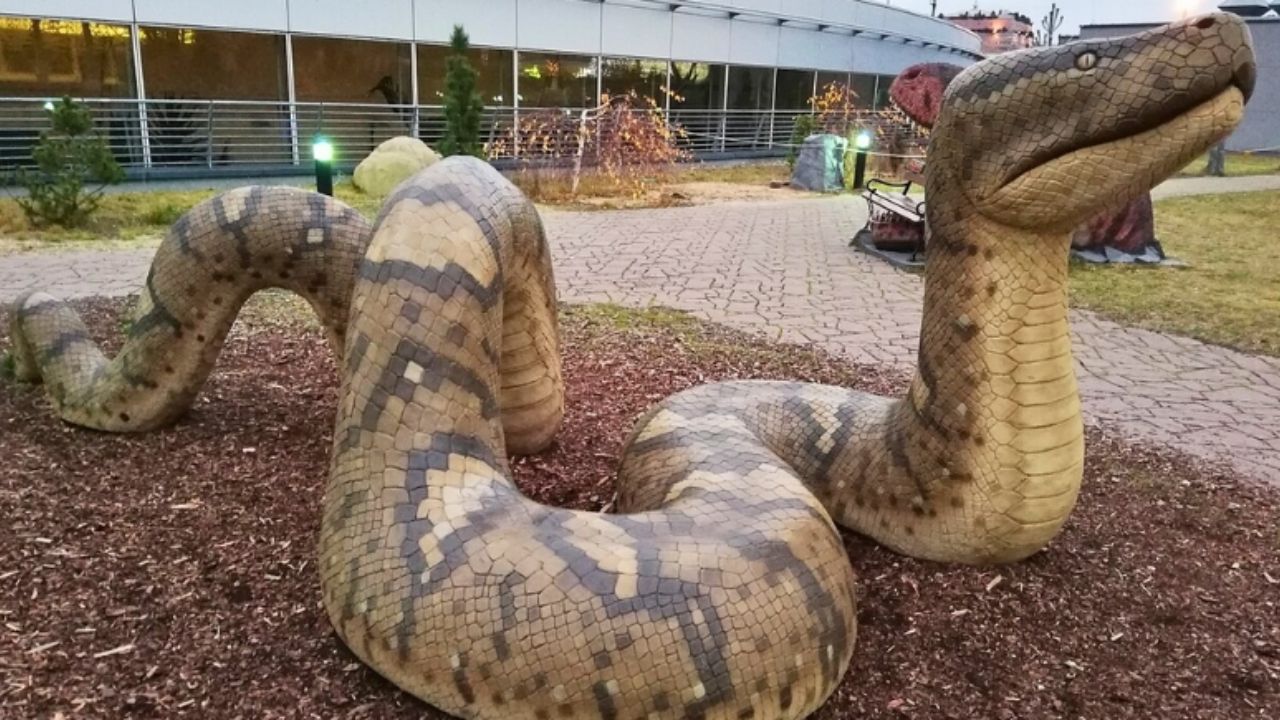Picture a snake so massive it makes today’s biggest anacondas look like shoelaces. That’s Titanoboa cerrejonensis, the prehistoric heavyweight that slithered through Earth’s tropical swamps more than 58 million years ago. When scientists first unearthed its fossils in Colombia in 2009, the discovery didn’t just shatter records — it rewrote what we know about climate, ecosystems, and survival in the aftermath of dinosaur extinction.
The Rise of a Giant
Titanoboa showed up during the Paleocene epoch (roughly 58–60 million years ago), the geologic period just after the dinosaurs disappeared. Earth was in recovery mode — rainforests stretched across northern South America, thick with steaming swamps and teeming with new species. And at the top of this post-dinosaur food chain lurked Titanoboa, a snake so large it could dominate anything that shared its habitat.
Read Also- Top Must-Visit Cafés Across the U.S. for Coffee Lovers
Its remains were first uncovered at the Cerrejón coal mine in Colombia, today one of the richest fossil sites in the world. Back then, it was an equatorial swamp — the perfect home for a cold-blooded giant.
How Big Was Titanoboa?
Forget green anacondas and reticulated pythons. Titanoboa was operating on an entirely different scale.
| Snake Species | Average Length | Estimated Weight |
|---|---|---|
| Titanoboa cerrejonensis | 13–14 m (42–46 ft) | Over 1 tonne |
| Green Anaconda | 5–6 m | 250–550 lbs |
| Reticulated Python | 6–7 m | 350–400 lbs |
At its largest, Titanoboa could reach 46 feet in length and weigh more than a ton — longer than a school bus, heavier than a compact car. It remains the biggest snake ever documented by science.
Hunting Tactics
Despite its monstrous size, Titanoboa wasn’t venomous. Like modern boas, it relied on constriction:
- Ambushing prey near riverbanks.
- Coiling around it with crushing force.
- Squeezing tighter each time the animal exhaled, suffocating it.
- Swallowing the victim whole, headfirst, with flexible jaws that could stretch wide around giant meals.
Initially, scientists assumed Titanoboa hunted crocodile-sized reptiles and mammals. But a closer look at its teeth and jaw revealed a twist: Titanoboa was a fish specialist. Its curved, loosely attached teeth were perfect for gripping slippery prey. That means this behemoth likely spent much of its life lurking underwater, ambushing giant Paleocene fish.
Life in a Hot, Swampy World
Titanoboa’s sheer size tells us something critical about its world. As a cold-blooded reptile, it required constant tropical heat — likely between 86°F and 93°F (30–34°C) — to survive. That aligns with what researchers know about the Paleocene epoch: Earth’s climate was far hotter than today, particularly in equatorial zones.
In other words, Titanoboa was not only a predator but also a living thermometer, proof that ancient climates were scorching enough to support a reptile of such scale.
Why Titanoboa Matters
Titanoboa wasn’t just another fossil find. It was a scientific game-changer:
- Evolutionary Insight: Showed how life rebounded after the dinosaurs.
- Climate Evidence: Offered hard proof of extreme tropical temperatures.
- Ecosystem Clues: Revealed that post-extinction Earth was far from barren — it was a thriving, overheated jungle.
For paleontologists, Titanoboa became a symbol of Earth’s resilience. For climate scientists, it’s also a warning. Its existence proves that rising global temperatures can dramatically reshape ecosystems — sometimes favoring giants.
More than 58 million years later, Titanoboa’s shadow still stretches across science. It wasn’t just the largest snake in history. It was nature’s way of writing climate data into bone, scale, and fossilized teeth — a colossal reminder that when the Earth heats up, evolution answers with creatures beyond imagination.
FAQs:
1. How big was Titanoboa compared to today’s snakes?
It was about 42–46 feet long and weighed over a ton — nearly three times the size of the largest anacondas alive today.
2. Where were Titanoboa fossils discovered?
In the Cerrejón coal mine of northern Colombia, a site rich with Paleocene-era fossils.
3. What did Titanoboa eat?
Despite early theories of crocodile-sized meals, evidence suggests Titanoboa primarily preyed on giant fish.





















